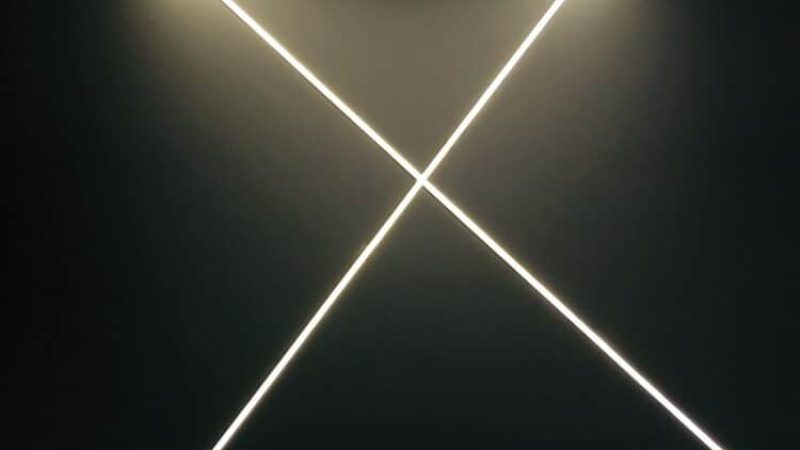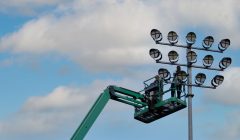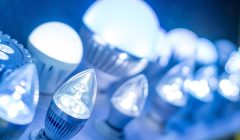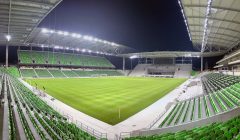Are you tired of outdated, energy-consuming lights that barely light up your space? Picture yourself walking into a cozy and inviting room, filled with brilliant and energy-efficient lighting. Not only will this save you money, but it will also give your space a modern look. Say goodbye to traditional lighting and say hello to LED Retrofit Kits. In this guide, we will take you through the process of upgrading your lighting with LED Retrofit Kits step by step, opening doors to significant cost savings and environmental advantages.
Table of Contents
ToggleConfidently Embrace Energy-Efficiency
If you’re hesitant about transitioning to energy-efficient lighting, we completely understand your reservations. That’s why we’re here to tackle all of your concerns and equip you with the knowledge necessary to navigate the world of LED Retrofit Kits with confidence. We’ll guide you through choosing the perfect kit and walk you through the installation process, ensuring that every step is covered. Alongside this, we’ll address any potential challenges or misconceptions so that you can make a well-informed decision.
Whether you’re a homeowner seeking to transform your living space or a business owner aiming to reduce energy costs, come along on this enlightening journey as we unravel the mysteries of LED Retrofit Kits and guide you towards a brighter, more energy-efficient future.
Learn more about: Why more and more soccer clubs are installing LED lighting
Why Upgrade to LED Retrofit Kits?
Switching to LED lighting offers numerous benefits for both residential and commercial spaces. Not only is LED technology modern and innovative, but it also provides practical benefits that enhance the overall lighting experience. Here’s why upgrading to LED is a smart decision:
- Energy Efficiency: LED technology is known for its highly energy-efficient lighting. Compared to traditional lighting sources, LEDs consume significantly less power, resulting in reduced energy costs and a smaller carbon footprint.
- Long Lifespan: LEDs have an exceptional lifespan in comparison to incandescent or fluorescent bulbs. This longevity translates to cost savings by reducing the need for frequent replacements.
- Superior Quality: LED lights are known for providing a bright, clear light that accurately shows colors. This makes them an excellent choice for different environments like offices, retail spaces, and homes.
- Customizability: LEDs provide the option to adjust color temperature and brightness, enabling you to create the perfect lighting environment for any room or space.
Steps to a Successful LED Retrofit with Energy-Efficient Lighting
Now that we’ve explored the advantages of LED lighting, let’s take a closer look at how you can upgrade your current fixtures to LED. By following these simple steps, you can ensure a seamless transition and fully enjoy all the benefits of LED technology.
Step 1: Identify high wattage fixtures and lamps
If you’re considering upgrading your lighting to LED, the first step is to identify the fixtures and lamps in your space that consume a high amount of wattage. This way, you can pinpoint areas where you can make significant energy-saving improvements. Here are some essential considerations:
- Assess current lighting, focusing on high wattage fixtures and lamps.
- Review energy bills to identify areas of high wattage usage.
- Evaluate lighting needs considering occupancy and illumination levels.
- Identify and replace outdated technologies with LED alternatives.
- Consult a lighting expert or electrician if unsure about wattage ratings.
💡 Key Takeaway: The first step to upgrading to LED lighting is identifying high-wattage fixtures and lamps. This can be done by conducting a thorough assessment, reviewing energy bills, considering lighting usage, and noting any outdated technology. Consulting with experts can also help prioritize areas for retrofitting and maximize energy savings.
Step 2: Consider all types of LED lamps and fixtures
When considering upgrading your lighting with LED retrofit kits, it’s important to explore the different types of LED lamps and fixtures available in the market. LED technology has made significant advancements over the years, providing a wide range of options to meet various lighting requirements.
LED lamps are available in different types to suit both residential and commercial use. These include bulbs, tubes, and downlights. Additionally, LED fixtures like troffers, high bays, and floodlights offer energy-efficient options for office spaces, high-ceiling environments, and outdoor lighting.
They come in various shapes, sizes, and wattages to cater to different needs such as ambient lighting, security purposes, or task illumination. The flexibility in installation makes them a versatile choice for a wide range of applications.
Step 3: Create a Proper Baseline
Understanding the Importance of Creating a Proper Baseline
Before installing new LED lights and controls, it is important to establish a baseline for your current lighting system. This allows you to understand the existing lighting conditions and accurately measure the improvements achieved through the LED retrofit. Here are the key steps involved in creating a proper baseline:
- Assess Current Lighting Performance: Evaluate brightness, color temperature, and light quality to identify issues.
- Measure Energy Consumption: Use wattage meters or tools to quantify current energy use, setting a benchmark for future savings.
- Analyze Lighting Controls: Determine the effectiveness and compatibility of existing controls like dimmers or sensors with LED technology.
- Examine Maintenance Requirements: Understand the current system’s maintenance demands, including lamp replacement frequency and ongoing issues.
- Gather Relevant Data: Collect inventory lists, electrical specifications, and historical maintenance records to facilitate decision-making.
- Consult with Lighting Experts: Seek advice from professionals specializing in LED retrofits for valuable insights.
- Establish a Proper Baseline: This foundation allows objective measurement of the new system’s impact in terms of energy savings, improved lighting quality, and long-term maintenance benefits.
💡 key Takeaway: In an LED retrofit project, establishing a proper baseline is essential. This step allows for the evaluation of current lighting conditions, measurement of energy consumption, assessment of lighting controls and maintenance needs, collection of relevant data, and informed decision-making regarding the retrofit.
Step 4: Install New LED Lights & Controls
Upgrading your lighting system involves an essential step: installing new LED lights and controls. This section will provide a comprehensive guide to ensure a smooth and successful installation process.
1. Choose the Right LED Lights: When choosing LED lights, it’s important to consider factors such as brightness (lumens), color temperature (ranging from warm to cool white), beam angle (narrow or wide), and compatibility with your existing fixtures. These considerations will help you make the right decision.
2. Install LED Lights: Follow these steps:
- Turn off the power for safety.
- Remove existing lights carefully.
- Prepare the area by cleaning and making necessary adjustments.
- Attach the LED lights securely.
- Connect wiring according to guidelines.
- Test the lights to ensure proper function.
Incentives for Upgrading to LED Retrofit Kits and Energy-Efficient Lighting
By switching to LED lighting, businesses can take advantage of valuable cost savings through rebates and incentives. To tap into these benefits, it’s important to research local and state programs, determine eligibility criteria, gather necessary documentation, submit applications, and track progress.
By following these steps, you can offset initial expenses and maximize return on investment in energy -efficient lighting.
Conclusion
Switching to LED retrofit kits offers several advantages. Firstly, it improves energy efficiency and helps save costs by replacing outdated fixtures. LED lights provide bright and consistent illumination, enhancing lighting performance. They also contribute to environmental sustainability by reducing energy consumption and lasting longer than traditional lights. The flexibility of LED retrofit kits allows customization based on specific needs, while their durability ensures long-term usage.
Additionally, businesses may be eligible for financial incentives and rebates to offset the initial investment cost. By measuring and verifying performance, optimal results can be achieved. Overall, transitioning to LED lighting is a smart move for businesses, offering improved quality, sustainability, and financial benefits.








